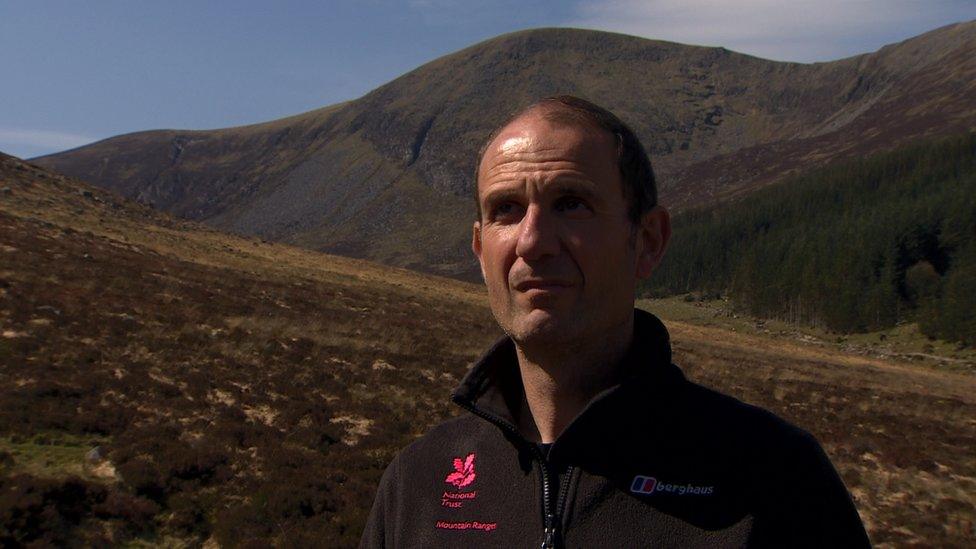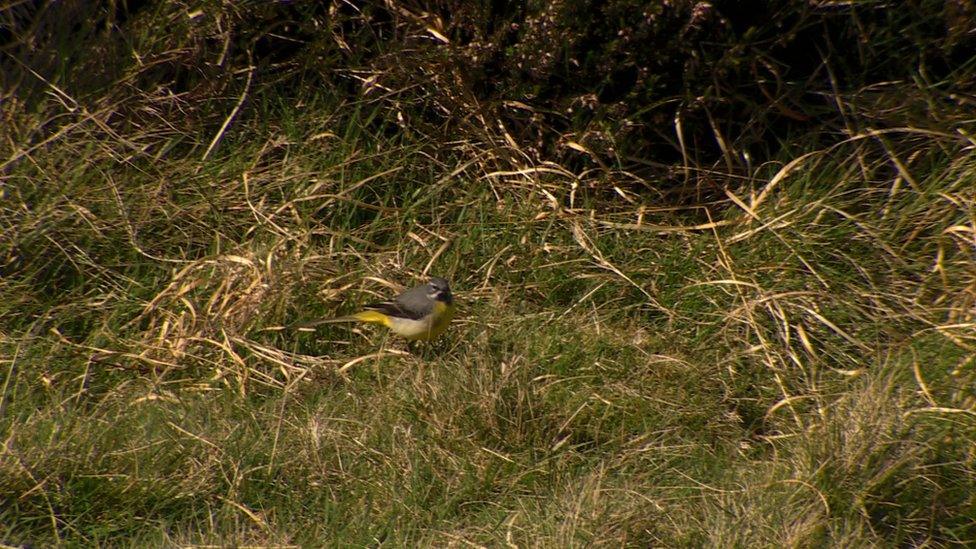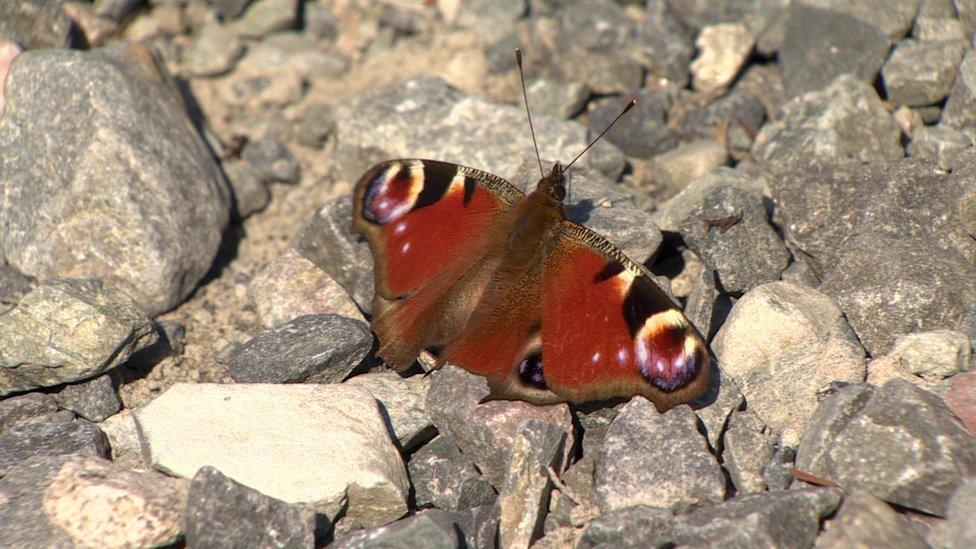Mourne Mountains: Impact of fires still felt one year on
- Published

Teams of firefighters from all over Northern Ireland worked to put out the flames
The devastation from a deliberately-started fire can still be seen on the slopes of Slieve Donard, a year after the flames took hold.
The fires raged for three days, lighting the night sky above Newcastle and destroying an area of heathland the size of 325 rugby pitches.
Teams of firefighters from all over Northern Ireland joined the battle against the flames.
Where a river acted as a natural firebreak the difference is clear.
One side is devoid of the "mature heather and rich biodiversity" that Cormac Dolan would expect to see.
"You're looking for more of a mosaic of vegetation in the ground, whereas here you've just got purple moor grass coming back so far, a year on from the fire," the National Trust wildfire recovery ranger said.
He is part of a team involved in helping the mountain recover.
Rangers say Slieve Donard's landscape may take many years to fully recover
With funding from the Department of Agriculture, Environment and Rural Affairs (DAERA), surveys are being done on the wildlife that lives here, as well as management of the faster-growing species, to give other plants time to return.
"Following the fire, you lose the ecological balance," Marc Vinas said, who is the lead ranger in the Wildfire Recovery Project.
"And then you have some species that respond quickly.
"Purple moor grass grows very well on the lowland areas of the mountain and has responded quicker than the heathland and the heather.
"That's why we see that yellowy colour, because it is getting dominant."

Marc Vinas is part of the Wildlife Recovery Project
That has an impact on wildlife as well.
Birds like the meadow pipit and skylark use the heather for nesting, and it is also a source of food for the red grouse.
But it is a slow-growing plant, and those bird species are fewer in number this year than before.
"The heather at the minute is at a stage called 'pioneer heather'," Marc said.
"This is going to be for 10 years, if the burn was not deep that heather will be recovering from the roots.
"It will take 10 years just to get that base of heather back. And in 15 or 20 years, it will reach the mature stage. But this is not the end.
"After that it will start to die and open to give room to the sunlight to reach the ground again. Then the mosses and other wildflowers will be thriving under that."

Bird species are fewer in number than they were before
Grazing livestock on the mountain helped control the faster-growing species, and how that is done is part of the work the rangers are carrying out to allow nature to recover.
"We have to compartmentalise the area, that is not easy because we cannot create fences," Marc said.
"At the minute we are creating a plan using innovative technologies that have been used in other properties in the National Trust in England and Wales, with GPS technology.
"It uses a very low-intensity pulse that tells the animal where it can graze, so you don't need to build a physical fence.
"Depending on the grazing results onsite, we can just send them to different areas to improve the condition of the habitat, breaking that dominance of purple moor grass."

Butterflies are being monitored by rangers
There have been more fires on the Mournes this year already.
But there is still birdsong in the air, and the numbers of butterflies and lizards on the mountain are being monitored by the rangers.
It will be a long, slow process.
"What we want is to reach as much as possible the maximum biodiversity as we had before," Marc said.
"Something that happened in days, we lost years of building that habitat.
"That habitat will take decades just to get back to what it was before.
"We'll make sure that that upland wildlife will be coming back to those recovering grounds in the Mournes."